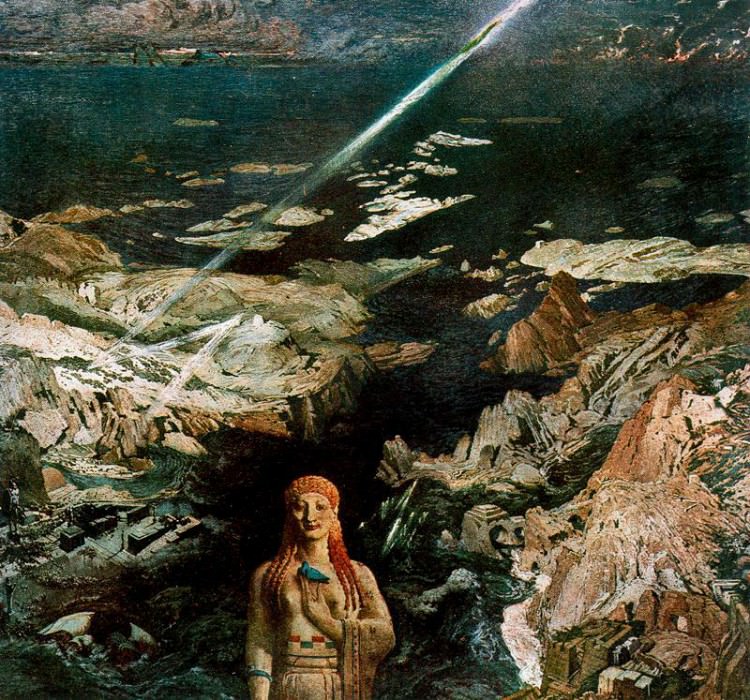22355 Leon Bakst
Leon Bakst – 22355
Edit attribution
Download full size: 800×747 px (0,2 Mb)
Back to album: Leon Bakst
The artist assembled the painting piece by piece for several long years, recording every moment of his stay in Greece and acquaintance with the age of Antiquity. For this reason, monuments dating back to the ancient Aegean culture of the 13th century BC, as well as architectural ensembles of Classical Greece coexist on the canvas, transcending spatial and temporal frames. The compositional center of the canvas is a statue of Aphrodite with a dove in her hands, her motionless smile coming into contrast with the depiction of civilization’s demise in the background.
Description of Leon Bakst’s painting Ancient Terror
The artist assembled the painting piece by piece for several long years, recording every moment of his stay in Greece and acquaintance with the age of Antiquity. For this reason, monuments dating back to the ancient Aegean culture of the 13th century BC, as well as architectural ensembles of Classical Greece coexist on the canvas, transcending spatial and temporal frames.
The compositional center of the canvas is a statue of Aphrodite with a dove in her hands, her motionless smile coming into contrast with the depiction of civilization’s demise in the background. The viewer, on the other hand, observes this as if he were on some kind of elevated position, with Aphrodite appearing closest to him.
By "ancient terror" Pagans understood the nightmare of human existence, which is always ruled by the unfathomable Rock. According to Vyacheslav Ivanov, the use of the divine image was to demonstrate that nothing, including revered idols, in the minds of pagans could resist the chaos of existence. Only Fate (or Chaos) is capable of living forever. It is possible to interpret the painting in a more historically specific context.
Since the idea of the work emerged during the Russian Revolution, we can assume that the use of the image of Chaos helped to illustrate the inevitability of the death of all old life on the eve of the drastic changes with which people were faced at the beginning of the twentieth century. There is also a third interpretation, according to which Aphrodite symbolizes the eternity of art and its universal essence.
In 1909 the painting was shown at an exhibition in Paris, and a year later it was already awarded the gold medal in Brussels. "The Ancient Terror was destined to become a landmark work of art in many respects - primarily for Bakst himself, who, despite his desire to paint a similar canvas again, almost never returned to painting and created only theatrical sets. In addition, the painting exposed another way of the art of the 1910s - neoclassicism, whose subsequent popularity allowed it to be jokingly called a chronic "disease" of culture.
Кому понравилось
Пожалуйста, подождите
На эту операцию может потребоваться несколько секунд.
Информация появится в новом окне,
если открытие новых окон не запрещено в настройках вашего браузера.
You need to login
Для работы с коллекциями – пожалуйста, войдите в аккаунт (open in new window).















You cannot comment Why?